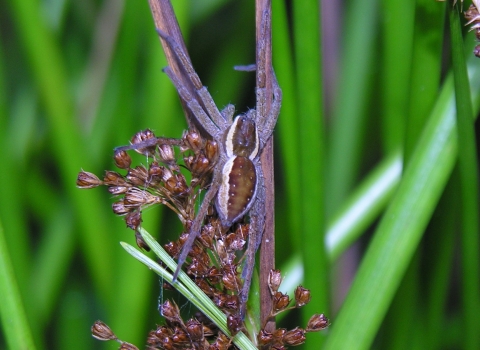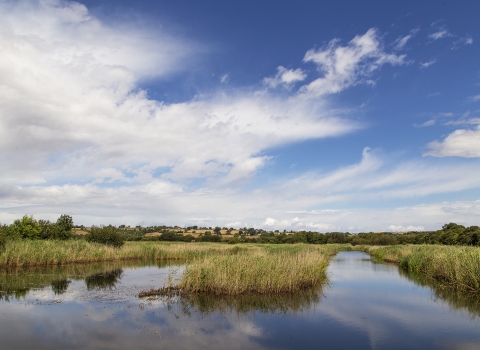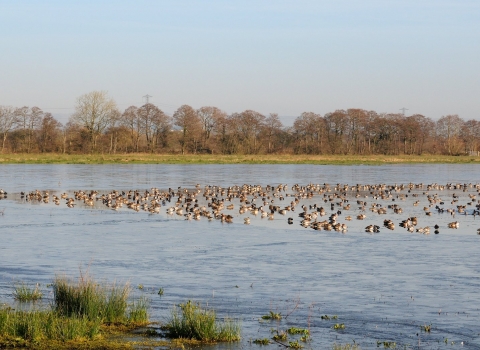Permit only
Sharpham Moor
Know before you go
Dogs
Visit the 'Dog walking on reserves' page in the Contact section for more information.
When to visit
Opening times
Open at all timesBest time to visit
Spring and summerAbout the reserve
This small reserve was the second area of land to be designated a nature reserve in England, in 1923, and the first nature reserve designated in South West England. It was created as a reserve to stop it being excavated for peat and to conserve the nationally rare hybrid sedge Carex x evoluta which is derived from Carex riparia x Carex lasiocarpa. This rare hybrid sedge was first recorded here in 1915. All the surrounding land has now had peat extracted from it and this has led to a dramatic drying out of this once very wet reserve. Despite this drying out and considering how small it is, this site has a good range of habitats including mature wet woodland, a pure stand of Alder Buckthorn and damp grassland.
You can also find Fen Bedstraw, Great Water Dock, Skullcap, Purple Loosestrife, Meadowsweet, Yellow Iris, Ragged Robin, Purple Moor Grass and Lady-fern as well as many common grass species.
In the wooded part of the reserve is a pure stand of Alder Buckthorn and also Willow, Alder, Birch, Ash and Oak. The woodland also contains Wild Privet and Honeysuckle. The rank grassy vegetation and thickets of scrub are home to Cettis’s and several other warblers, and Cuckoos often call from within the reserve in summer. This is also an excellent place to look for damsel and dragonflies hunting for insects in the open areas of the reserve.
Reserve conservation management – Periodic livestock grazing and scrub control.
History and archaeology – In 1923 this plot of land was bought through the efforts of the eminent botanist professor A. G. Tansley who raised the purchase price of £45 through public subscription. The land was then given to the Society for the Promotion of Nature Reserves which eventually became the Royal Society for Wildlife Trusts. It has been owned by the Somerset Wildlife Trust since 1986. This land was originally identified as being important because of the presence of the very rare plant Carex x evoluta. It was also seen as important as being a relict of the Street Heath raised bog communities. However, due to peat extraction from the surrounding area and a big drop in the water table the site dried out considerably. In 1923, the site was wooded except for a clearing in the south east corner. By the mid 1940’s the site was completely wooded. The current open area in the southern end of the reserve was created by felling trees 1999.
Close to RSPB Ham Wall, NE Shapwick Heath and the Avalon Marshes Centre.



